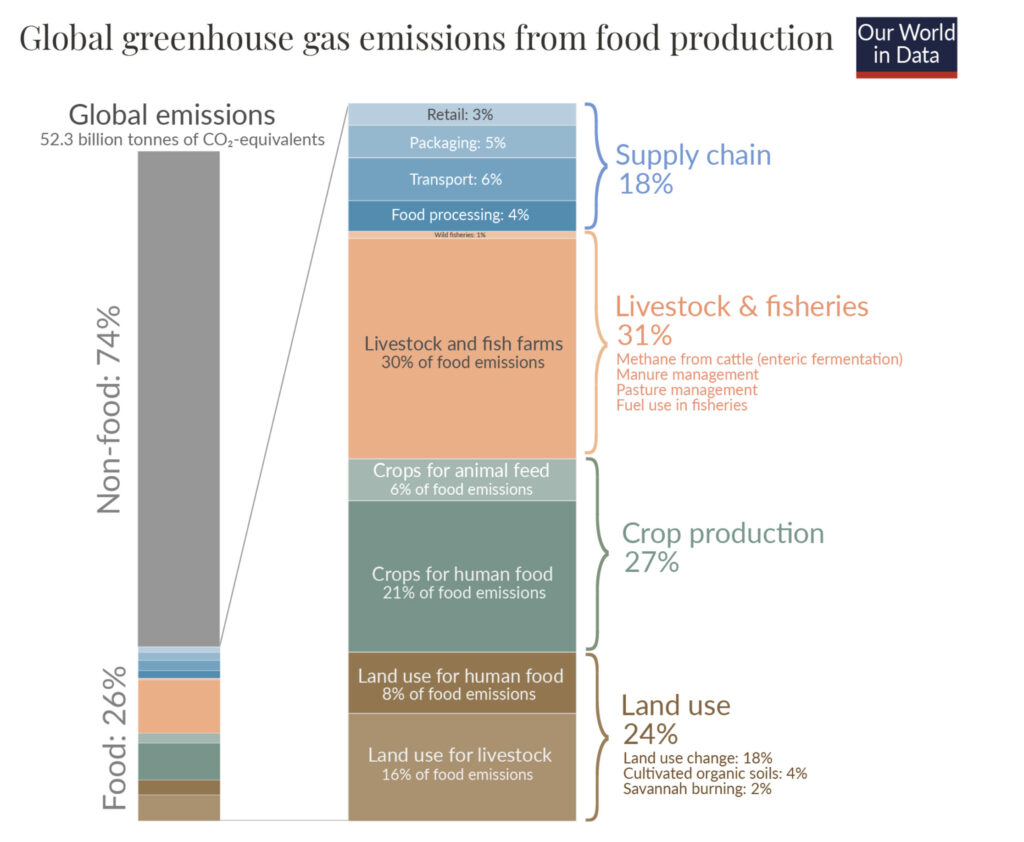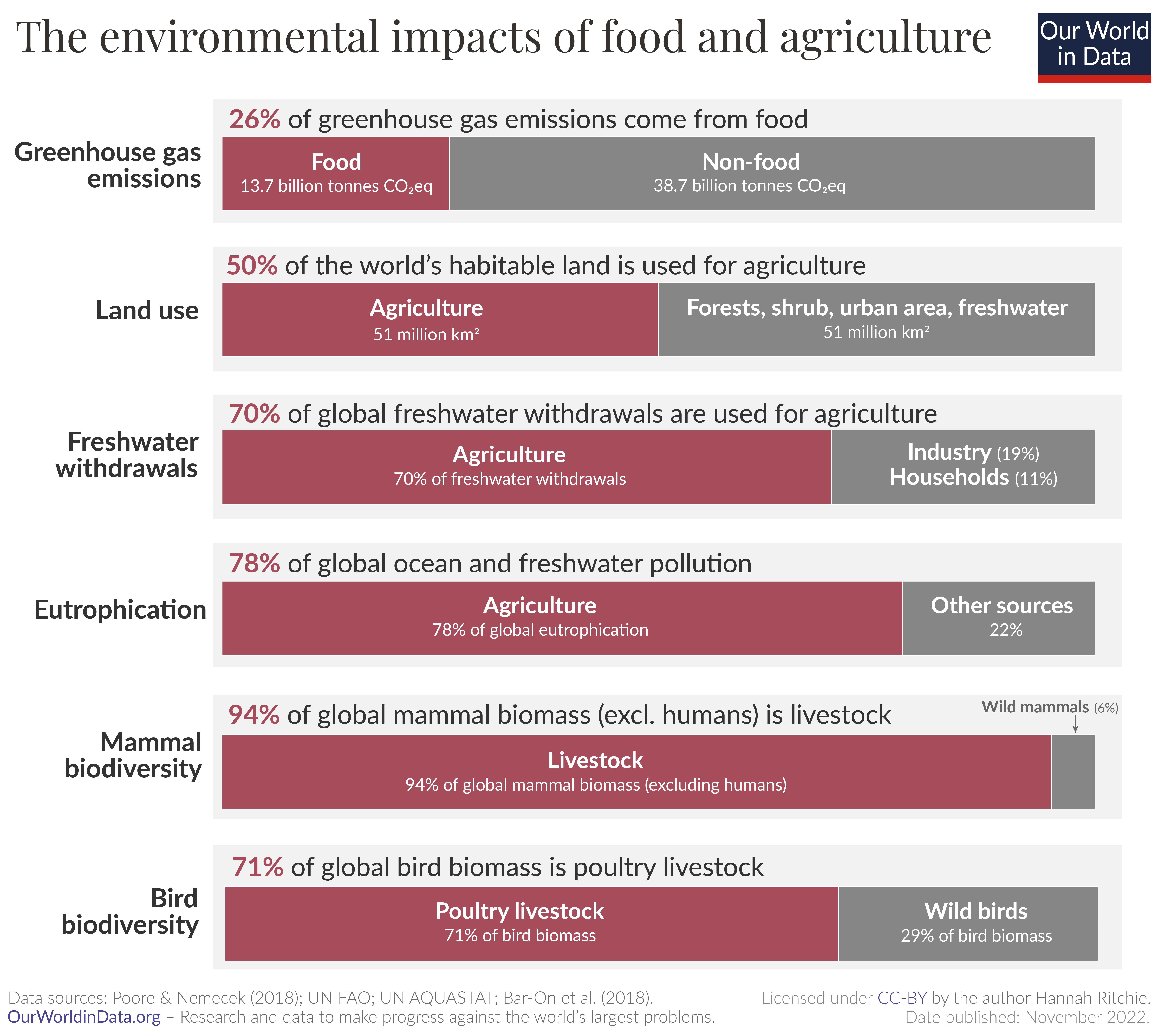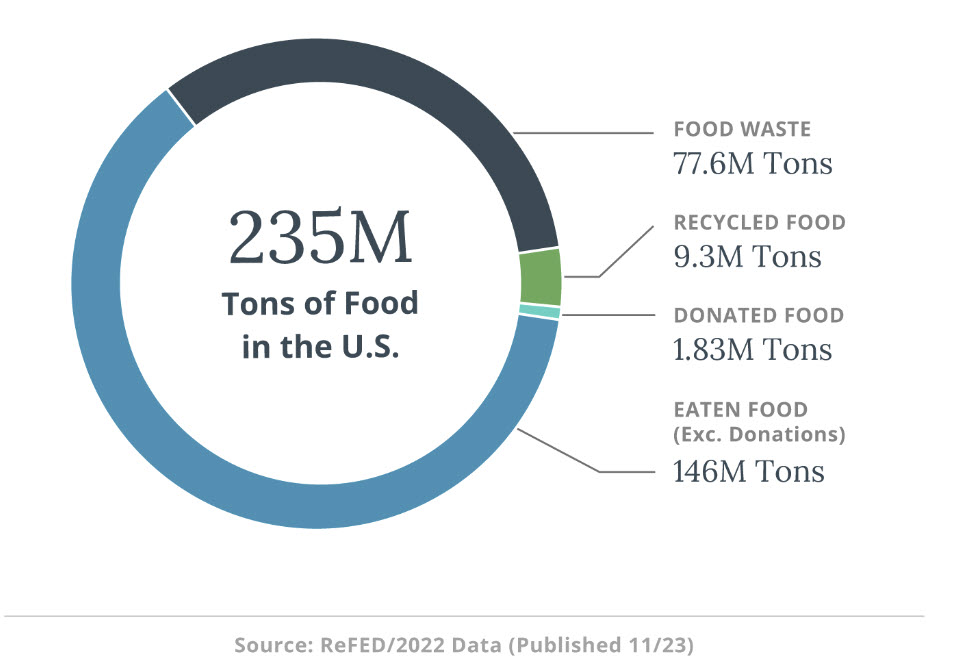
Understanding the Data Leads to Better Decisions
Understanding our food supply chain by the numbers helps us get our arms around different solutions. Using data from the OurWorldinData site helps us frame the picture about our food. What we learn is our ability to produce food has risen dramatically but that we struggle downstream as 38% of US food is wasted according to ReFED and food insecurity is prevalent as 1 out of 8 Americans are food insecure.
50%
of the world’s habitable land is used for agriculture
38%
of all edible food in the US gets thrown away and uneaten
87%
of our food waste ends up in a landfill, incinerator or left to rot in a field producing methane
1/8
of Americans are food insecure
Improvements in Food Production Have Lead to Positive Outcomes including the reduction of global poverty:
The Global IMpacts of Food Production
Food Production has impoved dramatically helping to reduce global poverty
Our ability to produce food has improved dramatically. Consider the increase in yeild per acre for staple crops like wheat, potato, rice and cerals. In 1961, the US was producing 2.5 Ton of cereal per acre. In 2023, that number has risen to 8.07 Tons per acre. In countries like Africa, if we can increase crop yeilds without significantly inpacting the enviroment, we can keep decreasing global poverty. According to the UN, the international poverty line is $2.15 per day. In Ethopia, its $2.04 per day and in the US, its $24.55 per day.
If food costs more than 52% of household income, a diet is considered unfforable in countries like Ethiopia that need to maximize what they earn. If we are able to produce more healthy food on less land, our global poverty numbers go down.
With increased Food Production Comes Challenges:

The IMPACT of FOOD on GHG EMissions
26% of Green House Gas emissions are caused from food production
How we grow, process, eat and discard our food is responsible for 26% of our ‘GHG’ emissions, while non-food related activity (electricity production, transport, industry, buildings, etc ) accounts for 74% of GHG emissions. Of our edible food, a large percentage is tied to beef, lamb and diary.
This interactive graph from OurWorldinData explores how much green house gas is produced when certain food is harvested and processed globally by millions of farmers and stakeholders in our food supply chain.
how food affects us
Impacts of food on society
How we produce food to eat has such a profound influence on our society. Did you know that 50% of our habitable land is used for agriculture and that 94% of our global mammal biomass is made up of our livestock (e.g.cows and pigs) and 71% is from poultry ( e.g chickens)?

One of the consequences of greater food production is increased Food Waste and Food Insecurity. Both outcomes are a result of a misalignment in our food system as we have an abundance of food:

FOOD Waste in the us
38% of US edible food went unsold or uneaten in 2022.
Food waste can be defined as uneaten food and inedible parts (e.g., peels, pits, bones). In the US alone in 2022, 38% of the 235 million tons in our food supply went unsold or uneaten. Of that 38% , ReFED estimates that 87% ( 78 M tons ) went to a landfill, incinerator, down the drain or left to rot in the fields. That number is equivalent to 140 Million worth of meals and 1.8% of US GDP. Dana Gunders, the President of ReFED, delivers a powerful Ted Talk on how to turn the tables on ways to reduce food waste.
FOOD insecurity
1 out of 8 Americans are food insecure
Food insecuriy affects those that don’t have adequate access to sufficient, affordable, and healthy food. According to Feed America, 44 million people in America face hunger with 1 out of 5 being chidren. Of the food waste that we discard, over 68% is ediable and can be salvaged and repurposed to those in need.
Food waste and food recovery is a dumb problem that we can solve be changing how we handle and distribute our food.
